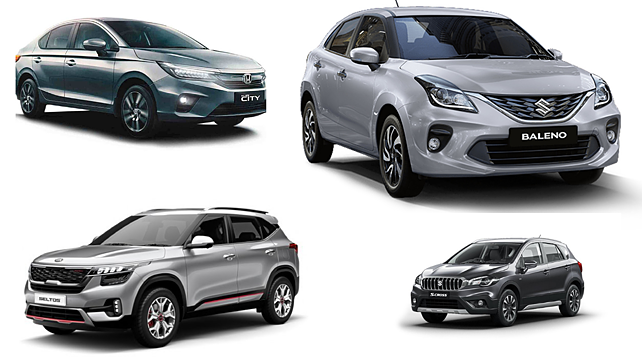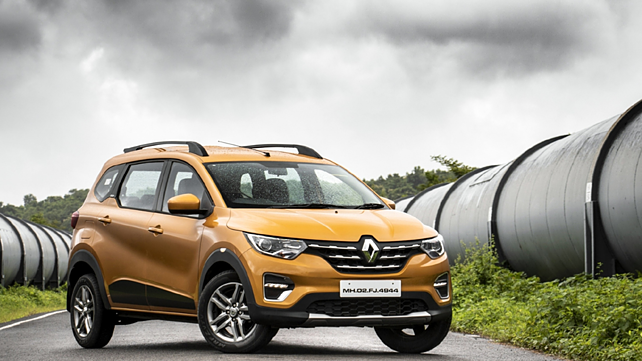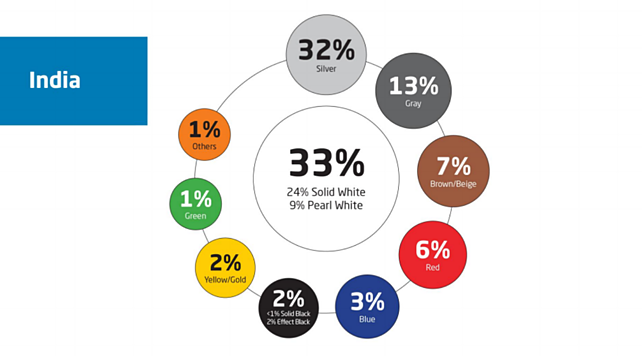
A land known for its diverse and vibrant colours, India has also seen carmakers experiment with a variety of unique, innovative colours.
Honda Cars India (then Honda Siel Cars India) had offered the first-generation Honda City in an emerald green pearl colour. Tata Nano, when launched, came with a sunshine yellow and Nissan brought it sunshine orange on its compact hatchback Micra. In recent times, Tata Motors introduced street gold on Altroz and Renault launched Triber in metal mustard.
In most cases though, experiments with colours remained popular on product brochures without many customers buying into them. Certain colours, of course, go well with certain body styles and a handful of customers do buy vehicles with such unique colour offerings.
“Character colours have always been tried by automakers in every market and India is no exception. Remember the red Maruti 800, the yellow Fiat Palio and the orange Maruti Swift? Every vehicle has some specific colour that best enhances the personality of the vehicle,” explained Avik Chattopadhyay, Co-Creator, Expereal.

He added that all launches and communication are done primarily using those colours. Being true to nature, these colours find few buyers as the majority prefer the ‘safer’ colours. “Character colours carry a lower resale value. Therefore, their popularity or adoption is limited,” he said.
Value driven choices
Indian customers, who are traditionally more value-driven, chose colours that are easy to maintain over a period of time, and one that fetches them good resale value. That is one of the primary reasons we see more white cars on roads versus black, blue or green cars.
However, in 2020, shades of silver and grey colours of the same family are gaining more popularity than white, which has been a traditional choice of Indian customers.
According to Axalta’s Automotive Colour report, in India, about 32% silver and 13% of grey cars were sold in 2020, taking the family total to 45%. White, on the other hand, remained the single standalone popular colour with 33% (24% solid white and 9% pearl white). Over 2019, grey gained 1% in 2020.
A similar trend has been observed in the BASF Automotive OEMs Colour report, where grey and silver have gained popularity with a contribution of 17% and 15% respectively. Achromatic colours like white continued to remain the most favoured colour for new buyers at 43% in 2020.

Experts indicate that Indian consumers are moving away from the traditional choice of white as it is most widely used in taxi and fleet segments such as Ola and Uber. Also at the same time, the rise in the popularity of SUVs is also one factor that grey and silver are gaining popularity with a notion that they are easy to maintain and get less dirty compared to white.
Chattopadhyay pointed out that silvers and greys have always followed white as the most popular colours as they suit our hot climate better. Also, as colours they are easier to repair and repaint, thereby ensuring good resale value. Nowadays, with improved styling allowing colours other than white to make the vehicles look better than before, customers are choosing such shades.
Harish Bijoor, brand strategy expert and Founder, Harish Bijoor Consults Inc explains the reason behind people going for more silver and grey. He said, “when it comes to choosing colour in cars, it is a science, which varies across different countries. For instance in the auto sector, the colour science is all about metal and it comes with different shades of grey and silver and possibly chrome. As metal has a colour in the minds of the people. Therefore, in a typically traditional country it is all about basic colour. So, the basics such as silver, grey and white rules people mind.”
White is also a cooler colour for Indian roads as white reflects and black absorbs. In colder countries black is a norm. Still carmakers launch new colours as they don’t want to be perceived as a plain vanilla offering from them, argued Bijoor. “The first thing car companies choose are variety and colour. Look at Ford T models. It used to come only in black,” he said.
As per BASF, market shares for white and black were slightly down over the previous year mainly due to an increased preference for colours like silver and grey. Further, chromatic colours like red at 8%, blue at 7%, beige at 3% and brown at 2% are noteworthy.

Chiharu Matsuhara, Head of Design, Asia Pacific, BASF said people in the Asia-Pacific region really enjoy choosing colours for their vehicles. “Colours are very human-oriented, flexible, and free, showing the diversity of the region and its people,” he said.
Global markets: grey colour popularity increases by 2% worldwide
Axalta’s Automotive Colour Popularity Report puts white (38%), black (19%), and grey (15%) as the top three automotive colours of 2020.
Grey increased 2% worldwide and is at a 10-year high as it continues to strengthen to a total of 15% of the market. For a decade now, white has been the most popular automotive colour around the world as it held its share of 38% for the past three years.
Similarly, the BASF report suggests the achromatic colours – white, black, silver and grey were the most preferred choice of coating in the majority of the vehicles produced worldwide. As it has for several years, white is still the most popular car colour around the world. It has a classic, timeless beauty, and a connection to both the environment and high technology.
Europe, Middle East and Africa (EMEA):
This region follows the global movement of chromatic colours. In 2020, about 11% of new vehicles in EMEA were coated in blue, making it the most popular chromatic colour. Violet is a newcomer to the market, while other chromatic colours are also gaining popularity, especially on smaller SUVs as their market segment grows.
OEMs used more than 160 distinct shades of blue in 2020 on vehicles in EMEA. Grey was second with 140 shades. Both colour spaces were more diverse than white, which only had 70 distinct shades. In the achromatic spectrum, white is still on top at 28% of the market, followed by grey and black.
North America:
Shades of blue are seen as more elegant, and buyers who may have chosen beige or brown in the past seem to be moving to blues or greys. As early as 2016, BASF designers had described blue as “a major colour direction for the automotive industry that will gain market share in upcoming years.” To their credit, the market has played out exactly as predicted.
South America:
South American car buyers have chosen more traditional, less flashy colours. Like other regions, white is by far the favourite, covering about 39% of OEM vehicles. The popularity of grey and silver is higher than in other regions, with 18% for each. Black has the smallest preference among the achromatic colours with 12%. Altogether, the achromatic colours command an 87% share. Red is the top chromatic colour with 9%, and blue is just 2% of the market. Orange is a newcomer, brown is holding steady, and beige has all but disappeared.
Asia Pacific:
White is still the most popular colour in the region, coating about 48% of the vehicles produced, while black and grey continue to improve. While the total numbers aren’t huge, brown, green, and violet are all consistent in colour popularity. It is predicted that it will take a long time for these colours to challenge white for the most popular colour in the Asia Pacific.